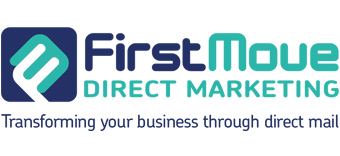Having completed over 25 years of direct mail campaigns averaging 40 a week, we’ve had the pleasure of working with some of the world’s best direct marketers. We’ve seen and experienced how they put their campaigns together, while adding our own expertise and knowledge into the mix to make for high ROI campaigns.
The most successful campaigns appear effortless in their execution, but it’s those with the most level of preparation that yield the most success. Here’s what we’ve learned as an outline of what every successful direct mail campaign contains.
Define your objectives
Figuring out what you wish to achieve with your campaign is the best place to start. Not only does it affect the design of the overall strategy, but can simplify just how you go about it. Whether it’s sales-focused or sign-ups-driven, think about what kind of conversion would satisfy the needs of the campaign. For those that are designed with brand awareness in mind, think about what kind of metrics you would use in order to measure its efficacy. We find defining objectives upfront invaluable when predicting the outcome.
Create a targeted list
Whether an internal database or a purchased list, the best direct mail campaigns target prospects with appropriate segmentation, the more available information the better. Think about the particular cohorts you wish to speak to and any behaviour that can help you increase conversions. Where do they live? Where do they shop? What kind of offers would interest them? The questions of who, what, where, why and when, help you the most effective method of communication for your data set.
Create your mailing design
As the vehicle for your campaign, the design is integral to its success. When developing your mailing materials, pay close attention to each element, whether it’s a letter, a flyer, special offer or a reply card. Are they eye-catching? Are they clear in their communication? Does the envelope scream “Open me”? Seek advice from your designer and direct-mail specialist, and don’t afraid to be creative. As a rule of thumb, 20 percent of the response is influenced by the design or writing of the mailing item, so give it the time and attention it deserves.
Then make sure your creative answers these 4 questions
1. Why should anyone read it?
2. Why should anyone believe it?
3. Why should anyone do anything about it?
4. Why should it be acted upon immediately?
Code your mailing
Set yourself up for highly accurate and measured results: Give your campaign a distinct identifier with personalised coding. With this information, you can determine which elements of your campaign are the highest performing and look at improving future distributions, as well as assessing the success of the existing one.
Test your campaign
The beauty of direct mail is in its flexibility. Why have just one offer when you can have many to establish just which is the most effective? A/B testing achieves even more from your campaigns. Try different calls to action on your envelope, change the wording of the offer to see which has the most engagement, or change the parameters of the database sample and watch the results roll in. With experimentation comes wisdom, and this wisdom is something we’ve acquired over the past two-and-a-half decades. Many approaches to the one campaign can offer insight into your database and how to best achieve an increased response rate with future mailings.
Distribute your mailer
Once you’ve fine-tuned your campaign, it’s ready for distribution, but there’s a lot more involved than putting a stamp on the envelope and sending it out into the wild. Bulk mailings require special consideration, largely so the postman doesn’t have a fit! We can advise on the requirements of the Royal Mail, and make adjustments to your campaign so it accommodates them. You might be eligible for Royal Mail discounts, in which case, gives you even greater ROI for a large-volume distribution.
Handle responses
Be confident in your ability to handle an influx of responses by being prepared. A test campaign will help you understand the response rate and plan for the extra demand on your resources, giving you ample time to assess a temporary staffing solution with your direct mail supplier should you need one. While you wait for the phone to ring, this is the perfect opportunity for additional training for your staff. The experience should be seamless for the customer from the moment they receive the mailing in their letterbox to when they connect with your team members for their new product or service.
Measure your results
Finally, and possibly the most insightful, your current campaign’s results are key for planning the next. Look at the rate of response and see if you can discern any correlation between the recipients and their behaviour, and of course, how it affected the bottom line. Your direct mail provider will have examples of previous campaigns to benchmark yours against, and will allow you to predict future responses. Make the necessary adjustments and commence your next phase of distribution for a simple and effective direct mail campaign.
You might also be interested in the following articles:




